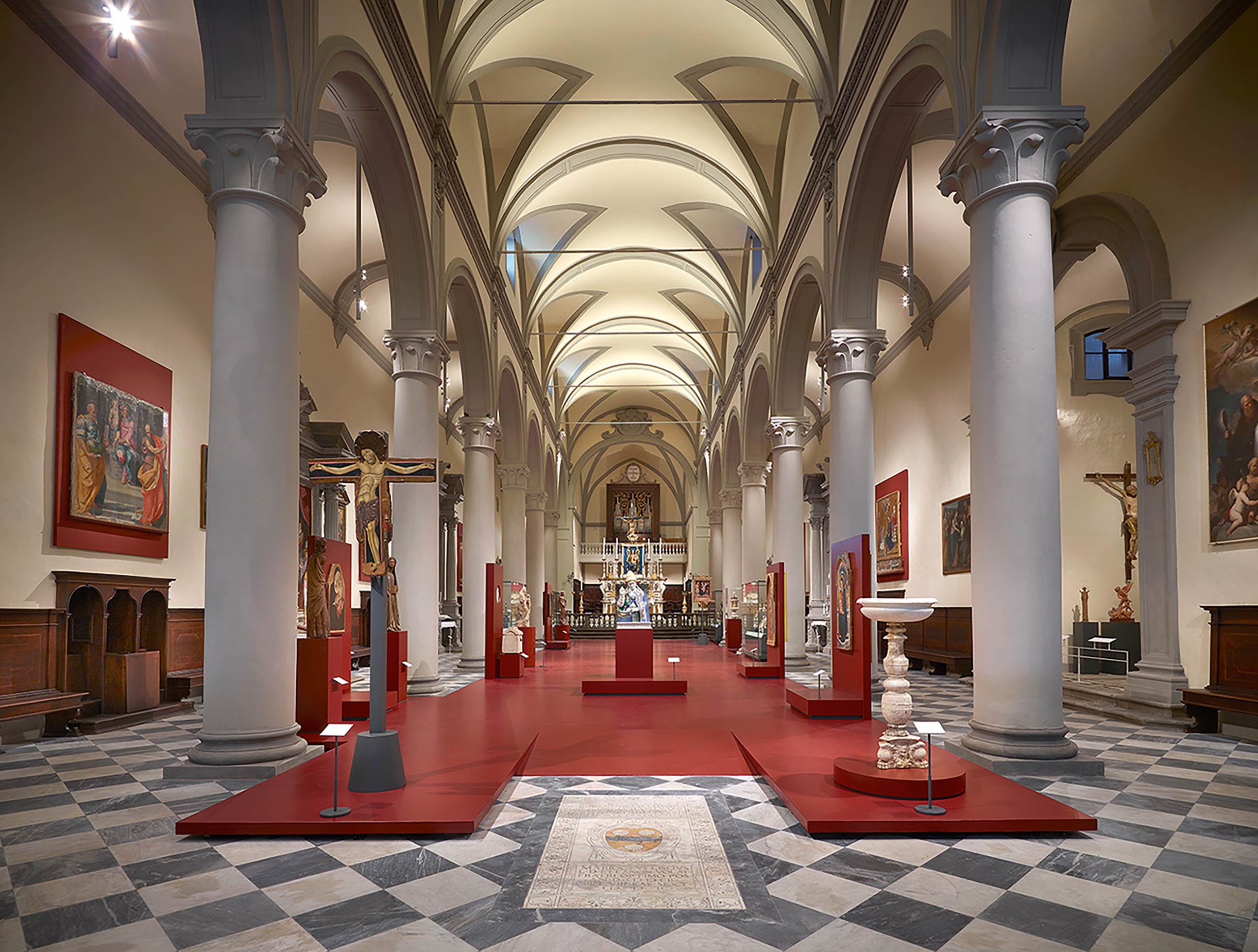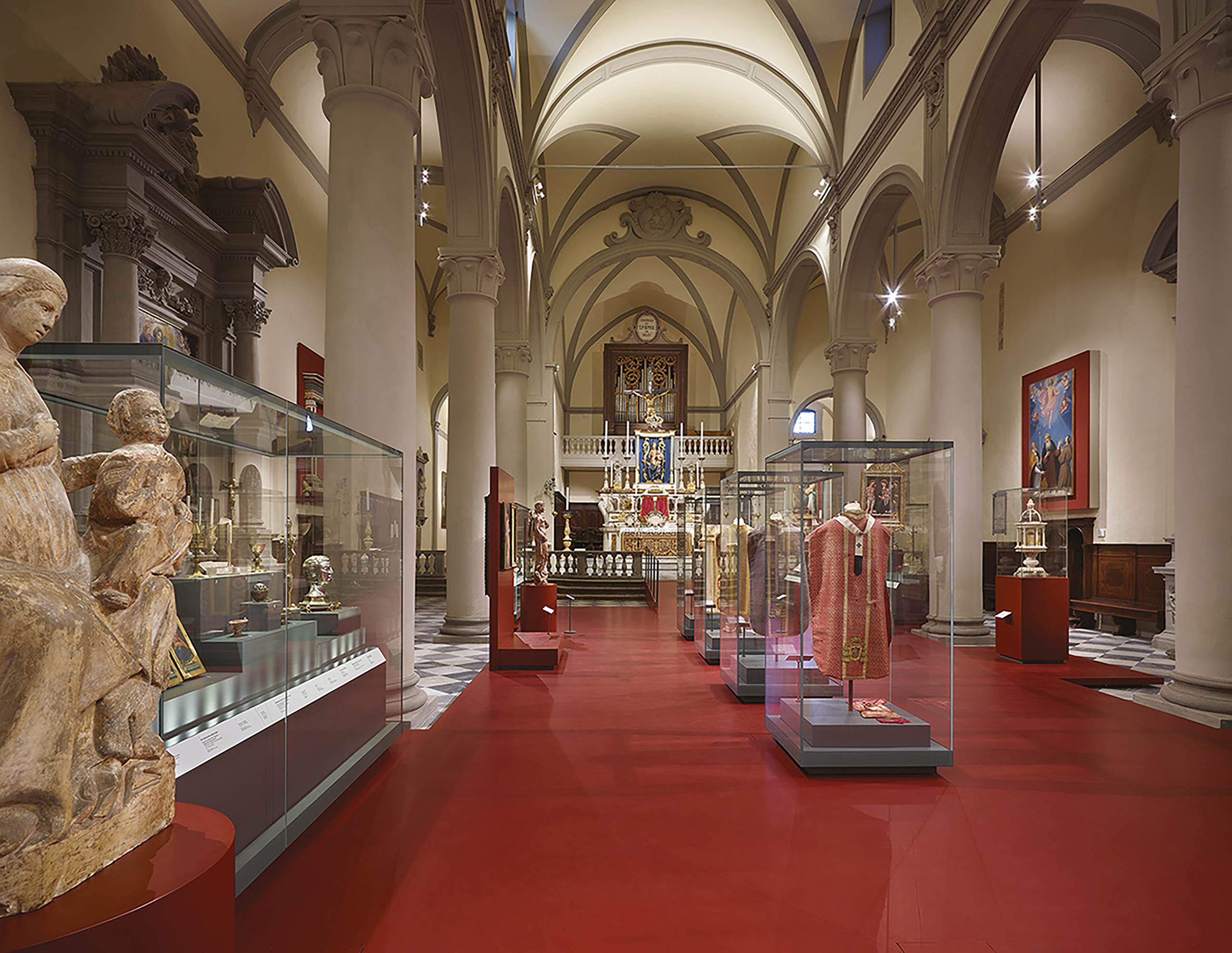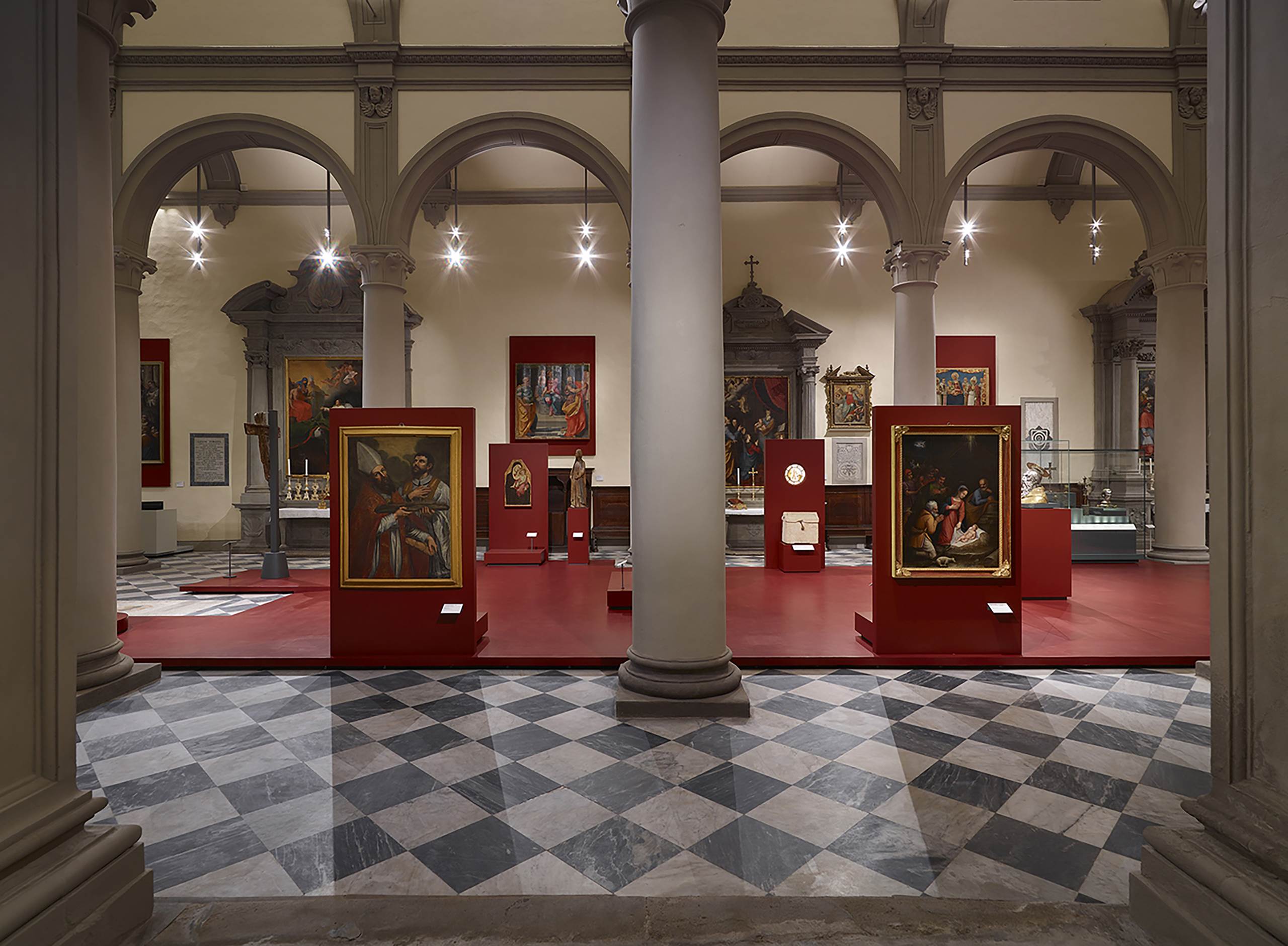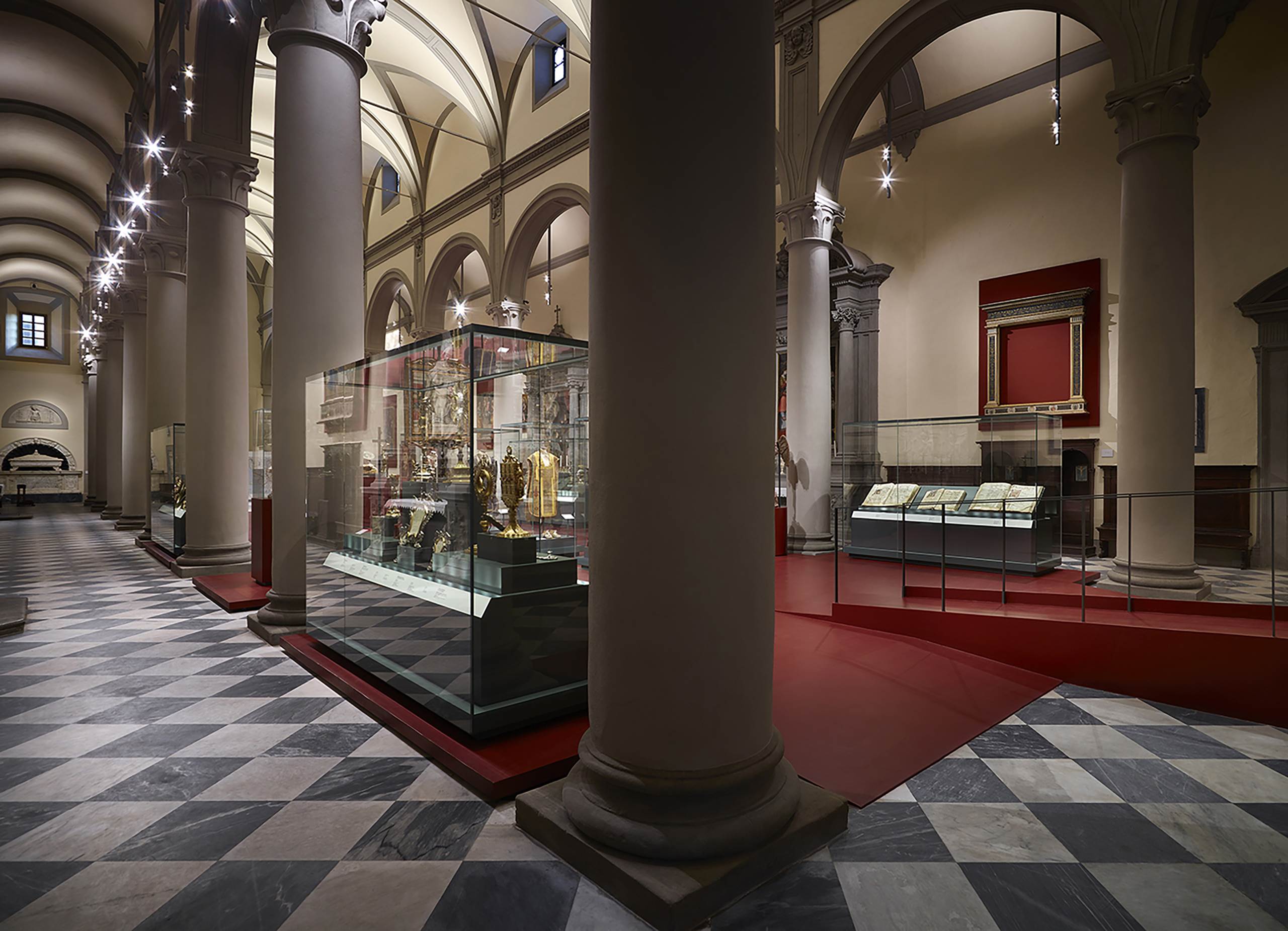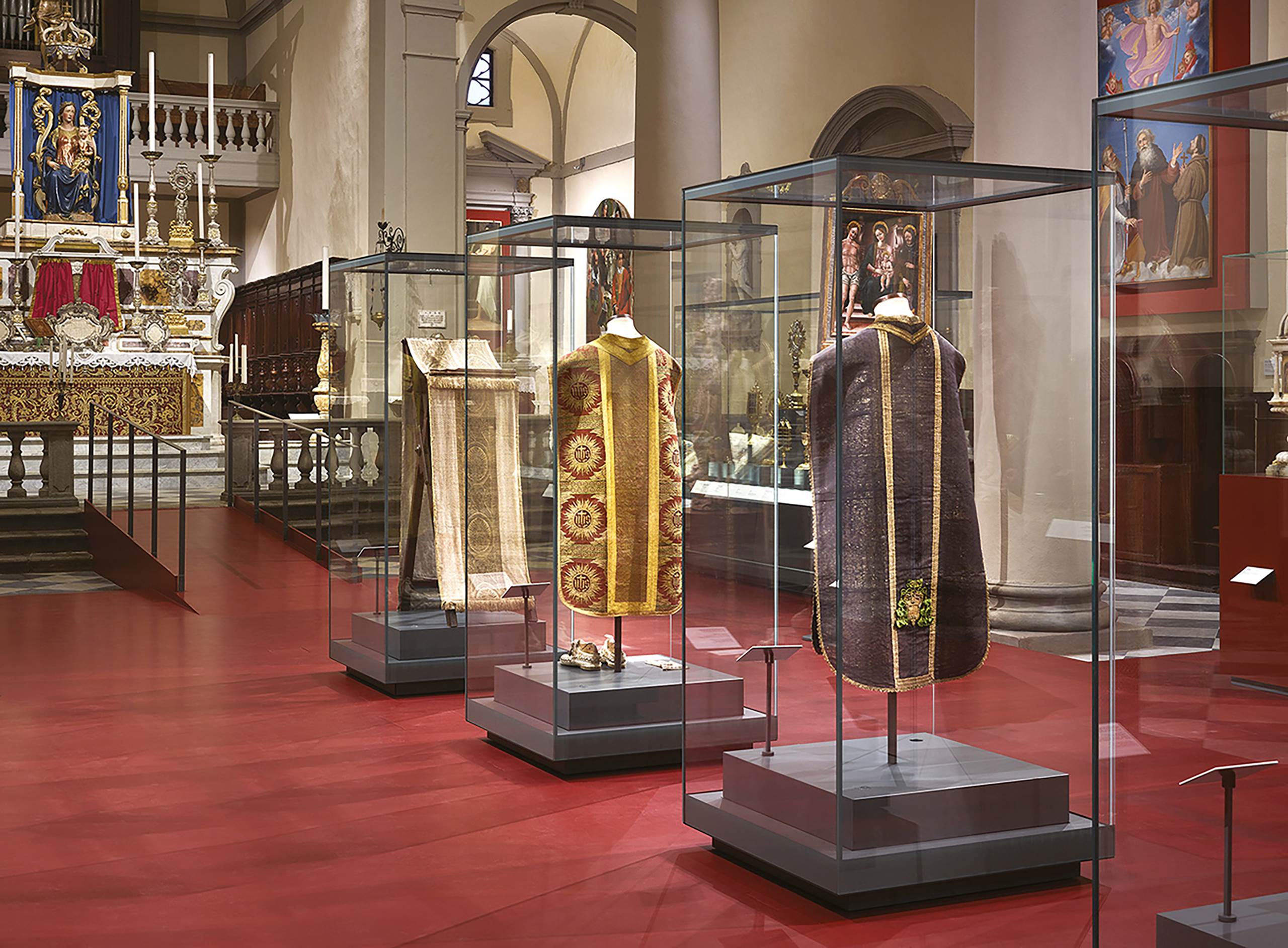Diocesan Museum, Church of Sant’Agostino
Starting in 2017, the Diocesan Museum of Sacred Art of Volterra has been located in the Church of Sant’Agostino, a 13th Century structure that was completely re-modelled in 1728. Although perfect for the new exhibition’s needs, the church still maintains its function as a place of worship that continues to host prayer and liturgical celebrations, in addition to being a structure of historical and architectural interest. The lighting design creates a fluid synthesis between all these interests and focusses on the central platform, which has a red carpet running the length of it to the main altar.It is in this area where the majority of the art is on display.
The lighting design accentuates the interior and creates a perfect balance between the church’s different needs: that of guarding and highlighting the sculptures, paintings, and furnishings, as well as the vestments sacred to the collection. It also exalts the continuity between the exhibited objects and the environment that hosts them. In addition to the original role of the church, the exhibition in the new headquarters houses works from the cathedral and, to a small extent, from other churches of the diocese.
The illumination of the central nave, which is barely highlighted more than the side aisles, establishes the right emphasis without distorting the perception of the environment and architecture. The main altar is lit frontally, underlining its liturgical function, while the monumental organ and the chorus area act as a natural backdrop. The light creates an optical cone and directs the eye towards the central fulcrum of the church, in a religious as much as architectural sense: the altar. It is through the lighting design that the church and the museum merge together, becoming one.
To preserve the mysticism of the space and create wayfinding for visitors of the exhibition, the design sided with sober, moderate illumination. The central element of the lighting design is constituted by linear, suspended stem mounted luminaires that serve to make a distinction between the central nave and the side ones. The stems of the luminaires underline the suspension elements and help to present the surrounding historical architectures. The result is that the architecture of the church and its art works are not altered because of the new museum. Instead, they create a neutrality with a coherent and respectful aesthetic that preserves the identity of the space.
PRODUCTS USED
Exenia: the lighting design calculations and the particular choice of installation has allowed the use of miniaturised optical units Museo Mini, CRI 95 – 3000K, 800 lumens, with differentiated optics (24°/30°/60°), controlled DALI in pairs.
Summary
Starting in 2017, the Diocesan Museum of Sacred Art of Volterra has been located in the Church of Sant’Agostino, a 13th Century structure that was completely re-modelled in 1728. Although perfect for the new exhibition’s needs, the church still maintains its function as a place of worship that continues to host prayer and liturgical celebrations, in addition to being a structure of historical and architectural interest. The lighting design creates a fluid synthesis between all these interests and focusses on the central platform, which has a red carpet running the length of it to the main altar. It is in this area where the majority of the art is on display.
The lighting design accentuates the interior and creates a perfect balance between the church’s different needs: that of guarding and highlighting the sculptures, paintings, and furnishings, as well as the vestments sacred to the collection. It also exalts the continuity between the exhibited objects and the environment that hosts them. In addition to the original role of the church, the exhibition in the new headquarters houses works from the cathedral and, to a small extent, from other churches of the diocese.

